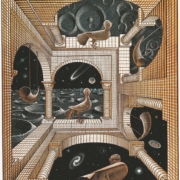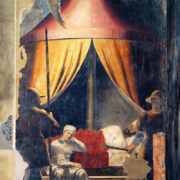Abstract
The author distinguishes between two imaginary group. The first is an imaginary explorer, organized by the primary processes of representation of the unconscious: the dream. The second is an imaginary explanation, featuring a ghostly background and whose goal is to create a self-representation of common and shared by the group: the myth. Dream and myth work at their own level through the same material of unconscious processes. The myth acts through tertiary processes, which create the connection between the primary and the secondary, while the dream is governed by primary processes. The following are then developed: describe the function mythopoeic into groups (Kaes R., 1976). The myth occurs after a disaster such as the representation of repair of group identity. The creation and expression of the myth of thought generate content from a source of anguish and of non-thought. They therefore worth re-establishment of the origin, the order of the world and its purpose. The myth acts as a “replacement” of ‘dreaming. It is designed as a meta-interpretation of the dream. The myth acts as a significant predisposition used by the preconscious. E ‘in this light that we can better discern the difference between the Read more


